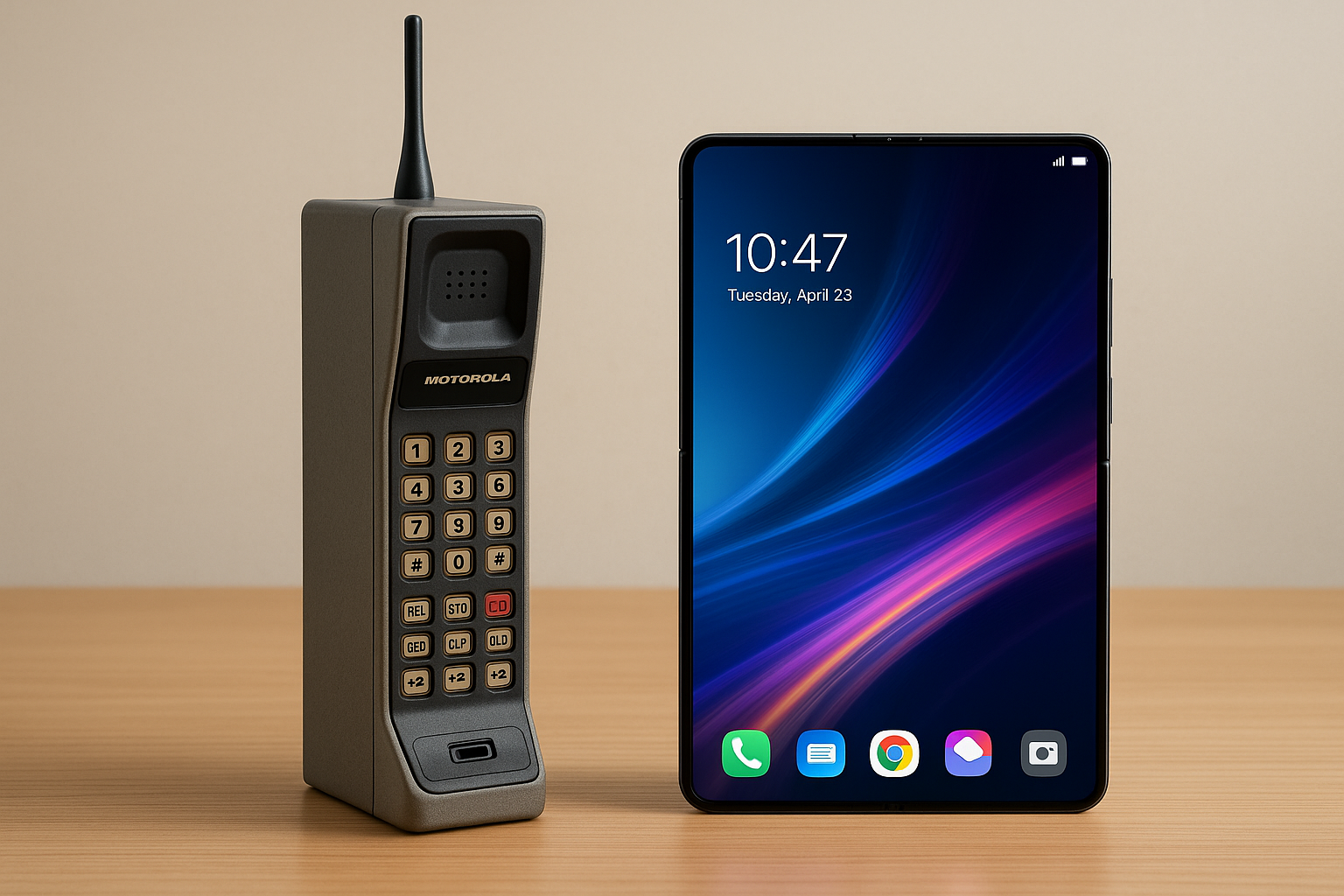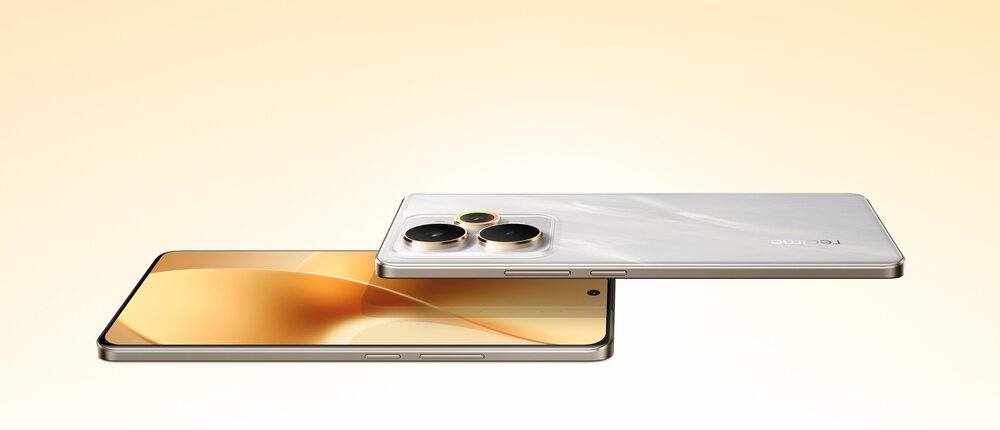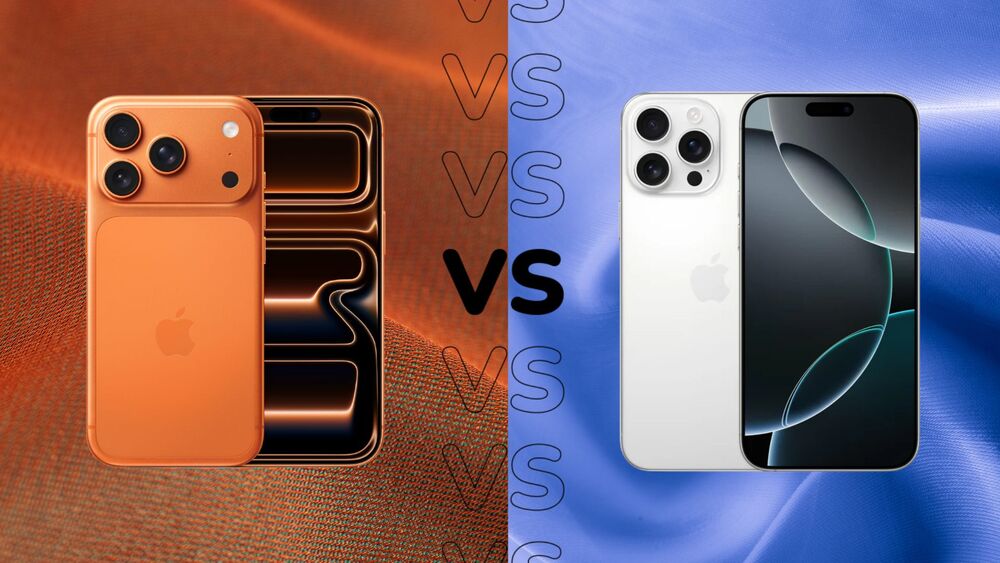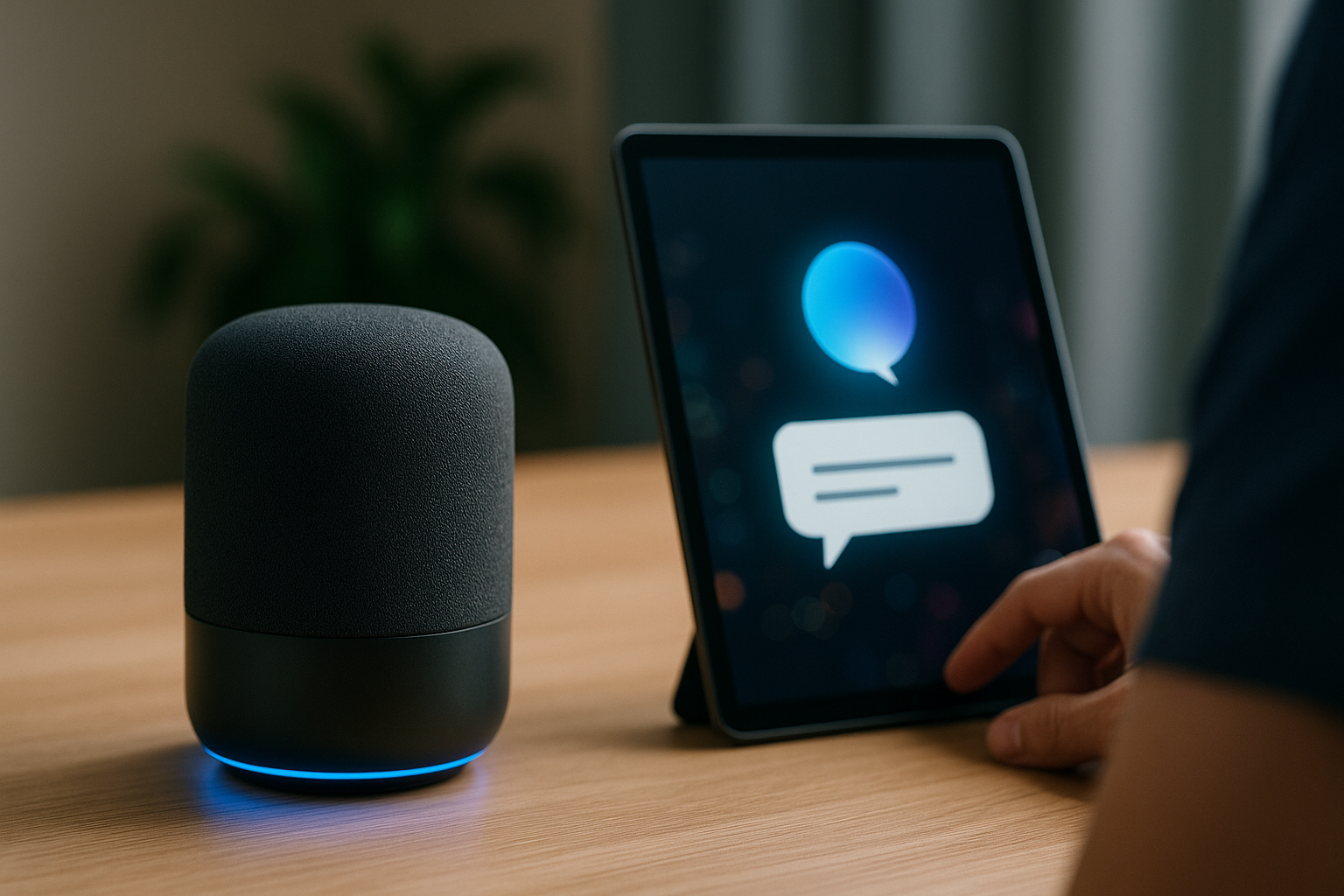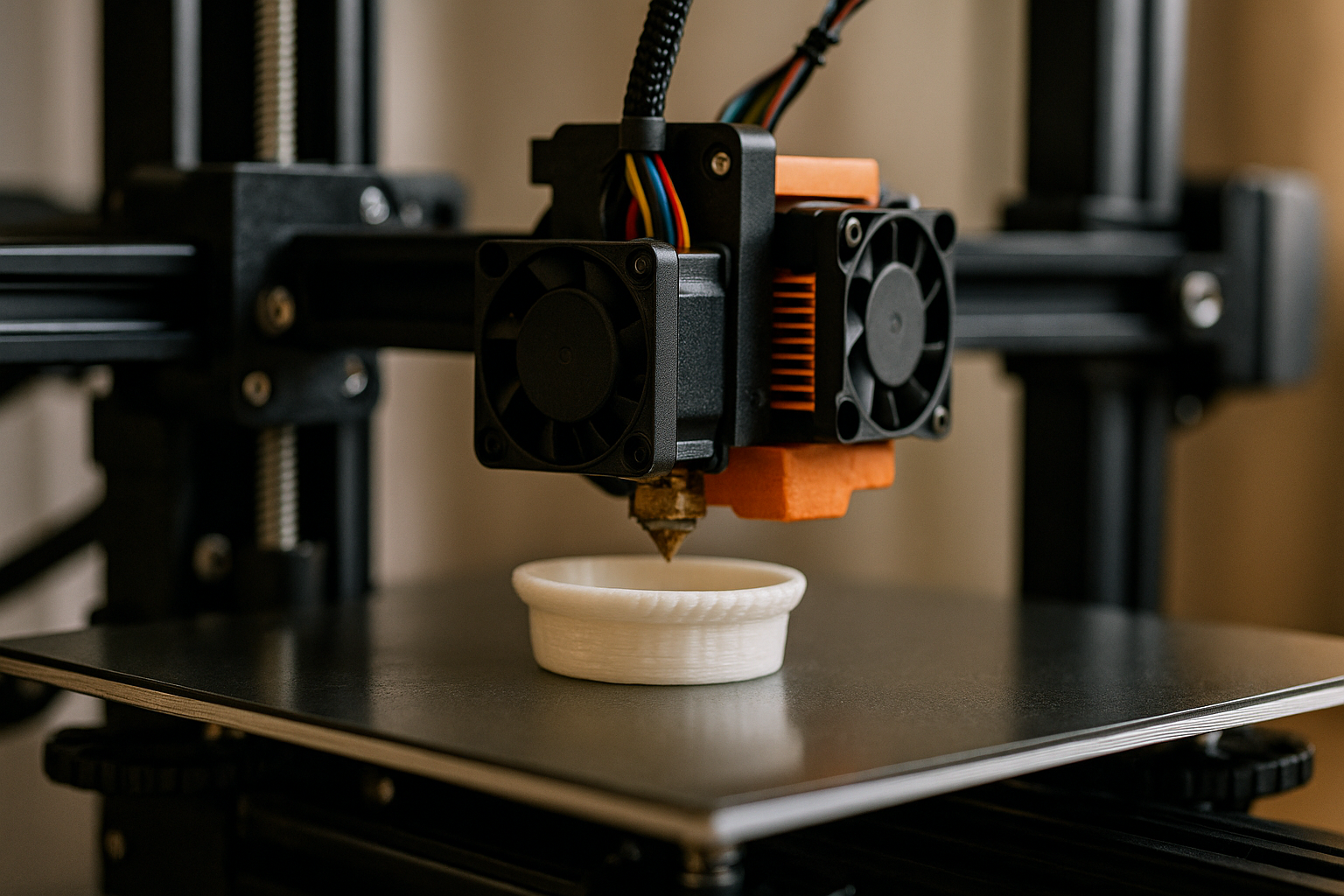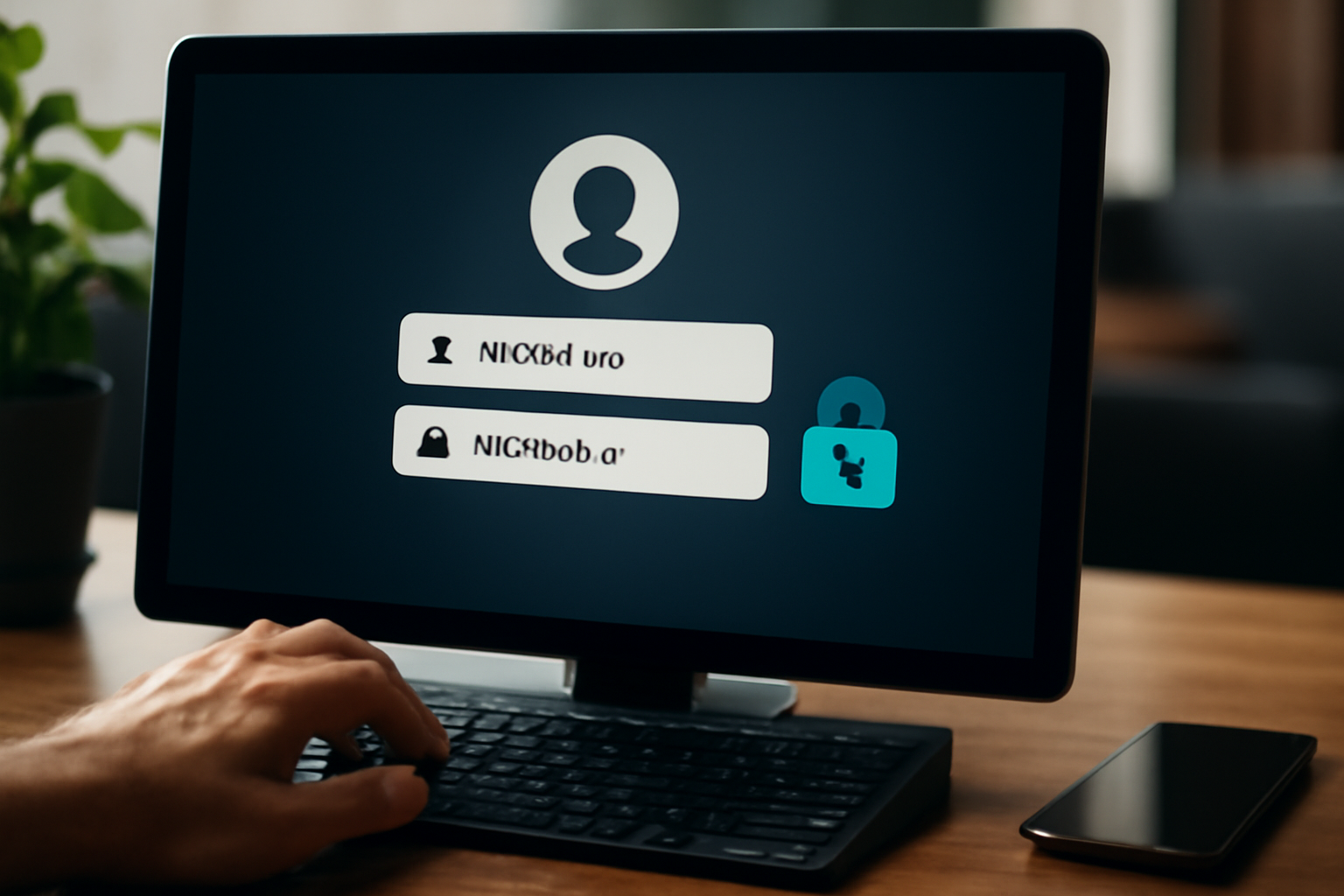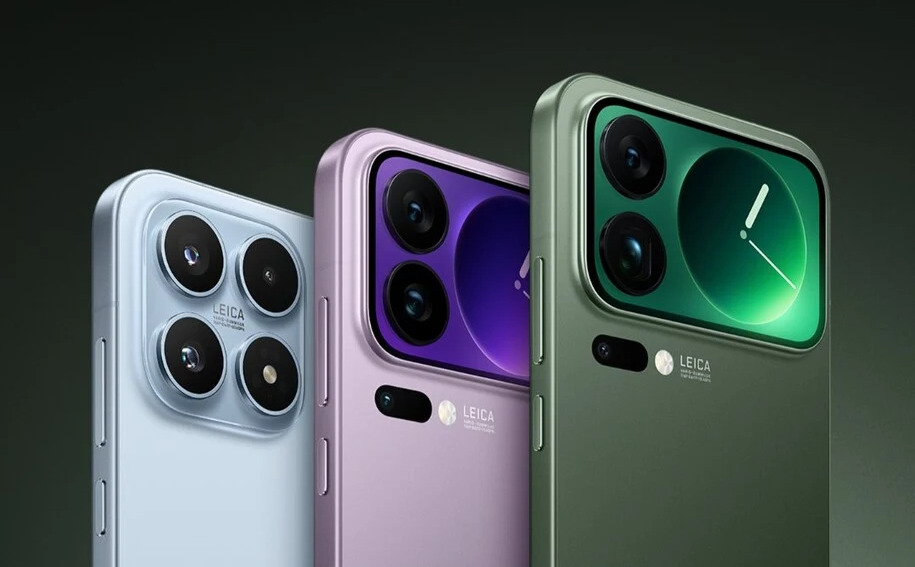The world we live in today is shaped, in large part, by a device that fits in the palm of our hands: the smartphone. But this wasn’t always the case. There was a time when mobile phones were so large and heavy that the idea of slipping one into your pocket seemed laughable. Fast-forward to now, and we’re holding flexible, foldable screens and AI-powered systems. The journey from “brick phones” to foldables is one of the most fascinating stories in modern technology — a tale of innovation, bold ideas, and consumer-driven evolution.
The Humble Beginnings: The Era of the “Brick Phones”
Let’s go back to the 1980s, when mobile phones first hit the market. These devices were bulky, heavy, and incredibly expensive. The Motorola DynaTAC 8000X, released in 1983, weighed nearly 2.5 pounds and offered just 30 minutes of talk time. Yet, it was revolutionary. For the first time, people could make calls away from home or the office.
At this stage, mobile phones were status symbols, mostly used by wealthy business professionals. They didn’t fit in pockets, and they weren’t very “smart” by today’s standards. But they opened the door to what was possible.
Even at this early stage, the desire to be always connected had begun. It laid the foundation for today’s hyper-connected lifestyle.
The 90s: Shrinking Sizes and Expanding Reach
As we moved into the 1990s, mobile phones became smaller, more affordable, and more accessible to the average consumer. Companies like Nokia, Ericsson, and Motorola competed to make phones lighter and more stylish. Battery life improved. Flip phones and candy bar styles became popular.
This was also the golden era of SMS (Short Message Service). People began texting more than talking, especially teenagers. It changed the culture of communication entirely.
Remember Snake on the Nokia 3310? It wasn’t just a game — it was a phenomenon. These early forms of mobile gaming and personalization (like ringtones and wallpapers) introduced users to the idea that a phone could be fun, not just functional.
The 2000s: The Rise of Smart Functionality
The early 2000s brought the first true smartphones. Devices like the BlackBerry and Palm Treo merged email and web browsing with mobile communication, and were embraced especially by business users.
Their tiny physical keyboards, email integration, and calendar tools made them essential for professionals. It wasn’t glamorous tech, but it was productive.
Then, in 2007, everything changed.
2007: The Game-Changer — Apple’s iPhone
When Steve Jobs introduced the iPhone, the mobile phone industry changed forever. It wasn’t just a phone — it was a touchscreen interface, an iPod, and an internet device all in one.
Suddenly, smartphones were no longer tools for just business; they were for everyone. The App Store, launched in 2008, revolutionized how we used phones. People could now customize their devices with apps for nearly any purpose: games, productivity, photography, and more.
This democratization of mobile technology meant users could shape their own experiences. The iPhone created a new ecosystem — one that blended hardware, software, and services in ways never done before.
The Android Countermove
Google’s Android OS, launched in 2008, gave phone manufacturers the freedom to innovate while keeping a shared ecosystem. Companies like Samsung, Sony, HTC, and Huawei flooded the market with Android-powered alternatives.
What Android lacked in polish early on, it made up for in flexibility. Widgets, custom launchers, and wide device options helped Android build a loyal following.
Competition fueled creativity. The annual “iPhone vs. Android” debate still thrives today — and that tension pushes both platforms forward.
The 2010s: Smartphones Become Lifestyle Anchors
Throughout the 2010s, smartphones became more powerful than ever imagined. Octa-core processors, 4K video, facial recognition, and massive app ecosystems turned phones into compact supercomputers.
Smartphones became:
- Cameras with DSLR-level quality
- Wallets thanks to mobile payments
- TVs with streaming capabilities
- Health devices with fitness tracking
- Remote offices through cloud tools
More importantly, phones became social lifelines. Apps like Instagram, WhatsApp, TikTok, and YouTube redefined how people connected, consumed content, and shared their lives.
The design also evolved: bezels disappeared, screens curved, and durability improved. Fingerprint sensors moved under the screen, and cameras started using AI to enhance image quality, especially in low light.
2019 and Beyond: Foldables Break the Mold
When Samsung introduced the Galaxy Fold, skepticism was high. Would people actually want a phone that folds? Would it break easily?
Yes, the first-gen devices had issues, but the idea was planted. Today, foldables have become a serious category with growing adoption.
- The Samsung Z Fold offers a tablet-sized screen in a phone-sized body.
- The Z Flip revives the nostalgia of flip phones with modern specs.
- Google, OnePlus, and Honor have all launched competitive foldables.
Foldables address a long-standing consumer desire: big screens that don’t take up space. You can now watch YouTube, work on spreadsheets, or game on a larger display — and still pocket your phone easily.
Challenges Foldables Still Face
While exciting, foldables face real hurdles:
- Price: Most are still expensive, often costing over $1,500.
- Durability: Even with improved hinges and screen protectors, they’re more delicate than traditional phones.
- App Optimization: Not all apps adapt well to the larger or split-screen formats.
- Battery Life: Larger screens demand more power, and software optimization is key.
Despite these challenges, foldables are here to stay — and they’re only getting better.
How Foldables Influence User Behavior
Foldables are beginning to change how people use their phones. Their larger screens make multitasking easier — whether it’s comparing documents, watching videos while browsing, or using multiple apps side by side.
Users can now treat their smartphones more like mini laptops, opening up possibilities for mobile professionals and creators alike. This shift in usage is influencing app developers to redesign interfaces for foldable-first experiences.
Smartphone Cameras: The Battle for the Perfect Shot
Camera technology has evolved rapidly. The race is no longer about megapixels alone. Today, it’s about sensor size, computational photography, AI optimization, and low-light performance.
Flagship phones like the iPhone 15 Pro, Galaxy S23 Ultra, and Pixel 8 Pro offer professional-grade features:
- Night mode
- 10x optical zoom
- Cinematic video
- AI skin tone correction
- Real-time object tracking
Smartphones now rival dedicated cameras in many use cases — from vlogging to product photography — all from your pocket.
Mobile Gaming and Performance Demands
Gaming on smartphones is no longer casual. With titles like Call of Duty Mobile and Genshin Impact, users expect console-quality experiences.
This demand has led to:
- High-refresh-rate screens (90Hz–144Hz)
- Advanced thermal management
- Custom gaming triggers and modes
- Immersive haptics and audio
Gaming smartphones — like the ASUS ROG Phone — are now tailored to performance users, and even mainstream devices are optimized for heavy gameplay.
Smartphones and the Creator Economy
Smartphones are the engine behind today’s creator economy. With high-quality cameras, editing apps, and social platforms, anyone can produce, edit, and publish content from a single device.
Creators can:
- Record vertical videos
- Use AI editing tools
- Add music and effects
- Go live to millions
- Monetize through integrated platforms
This has leveled the playing field for aspiring influencers, educators, entertainers, and small business owners — all from a phone.
Artificial Intelligence: Smarter Smartphones
AI powers today’s mobile experiences in real time. It personalizes your feed, enhances your photos, predicts your typing, and even manages your battery life. Assistants like Google Assistant and Siri can now complete full tasks: book a table, send a message, or summarize your schedule — just by listening.
AI is making smartphones more intuitive and proactive every day.
Environmental Responsibility and Longevity
The industry is slowly shifting toward sustainable practices. More brands are:
- Using recycled materials
- Offering longer software support
- Supporting repairability and modularity
- Creating trade-in and recycling programs
As users, we must adopt sustainable habits: protect our devices, update responsibly, and recycle ethically.
Security and Privacy in a Connected World
Smartphones today offer:
- Biometric security (face and fingerprint)
- App permission controls
- Encrypted messaging
- On-device AI for better data privacy
Still, users should stay informed and cautious — privacy is a shared responsibility.
Final Thoughts: A Story Still Unfolding
From the bulky Motorola to sleek foldables, the smartphone has transformed how we communicate, work, learn, and live. It’s more than just a device — it’s a personal assistant, a creative studio, a gaming console, a health tracker, and a digital life partner.
And the story is far from over. As AI, foldables, AR, and sustainable design evolve, the smartphone continues to adapt — shaping not just technology, but the future of human interaction itself.

